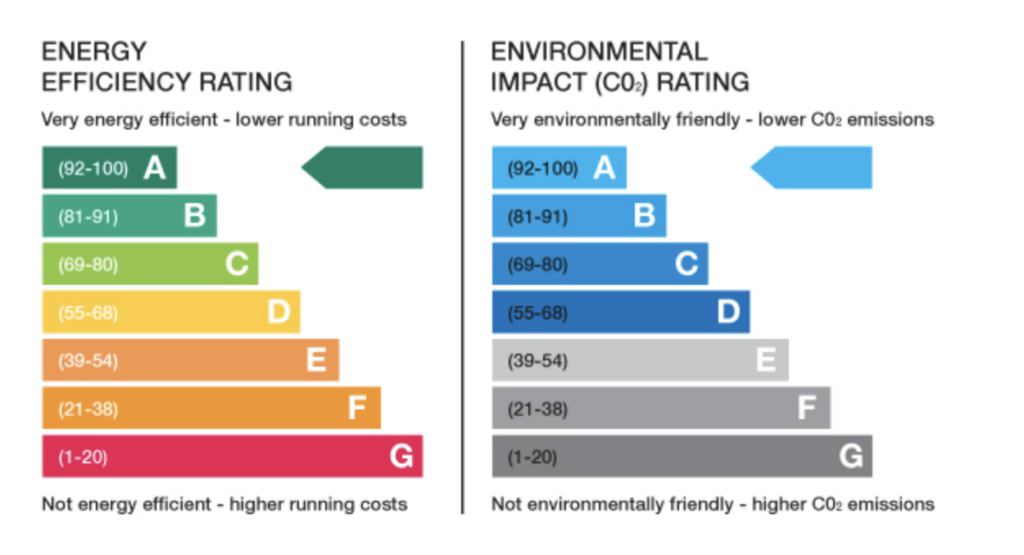Energy Efficiency – New Homes:
In a new home, a wood-burning stove can be used as a primary heating source and heat the house or be linked with another heating system.
What is a Linked Heating System?
A home with a linked heating system would have a wood-burning stove and a boiler, for example. They can be linked together to make a single heating system. This can be an incredibly efficient way to heat a home.
Ventilation:
In an energy-efficient home, ventilation is critical. In a new, well-insulated house, air tightness can have a significant impact on the home’s energy rating. An inefficient open fire often operates with a chimney of around 20cm internal diameter. Looking at SAP (Standard Assessment Procedure) calculations, such a sized chimney (20cm) would be expected to lose around 20 cubic metres of air each hour. The ventilation loss from a chimney with a small diameter could be half this rate at 10cm2. A closed loop stove and chimney system using an Ecodesign stove takes the combustion air from outside the home – and so will reduce the air loss from the room to virtually zero.
More Info on SAP:
SAP is known as the Standard Assessment Procedure that is used to calculate the energy efficiency and carbon output of a home. A single value for the energy efficiency of a home is given alongside the amount of CO2 produced by its various appliances. The energy efficiency and CO2 output of the home are added to give an overall figure. The diagram below, courtesy of the Stove Industry Alliance, demonstrates this.

Energy Efficiency – Existing Homes:
With a new home, builders can take advantage of the latest methods to maximise efficiencies. However, with existing homes in the UK, many have been built well before CO2 emissions and efficiency were heard of – with plenty built before 1900.
With existing homes, there needs to be a focus on working what you have and upgrading current systems to maximise efficiency. By swapping an open fire, a gas open fire or an old electric fire for a highly efficient Ecodesign stove, you can increase the efficiency level of your home and lower your carbon footprint. The diagram below shows just how efficient an Ecodesign stove is compared to an old stove and (the worst) a traditional open fire.

Burning wood is virtually carbon neutral – as long as the wood is burnt correctly and is properly seasoned. CO2 is taken out of the atmosphere by trees (via photosynthesis) and is released back into the atmosphere when the dead wood is burnt. This is known as a closed-loop CO2 cycle. Burning dead wood is actually less carbon-intensive than letting the dead tree rot on the forest floor. With this in mind, it is also worth considering that gas produces 25 times more carbon than burning wood. With oil, it’s 65 times greater.
According to SAP calculations, it is 29% cheaper per kWh to burn wood than to use natural gas. This cost-saving increases to 43% when compared to oil and 50% compared with LPG. And finally, it’s a 77% saving compared to electricity.
There are significant savings that come with burning wood!








